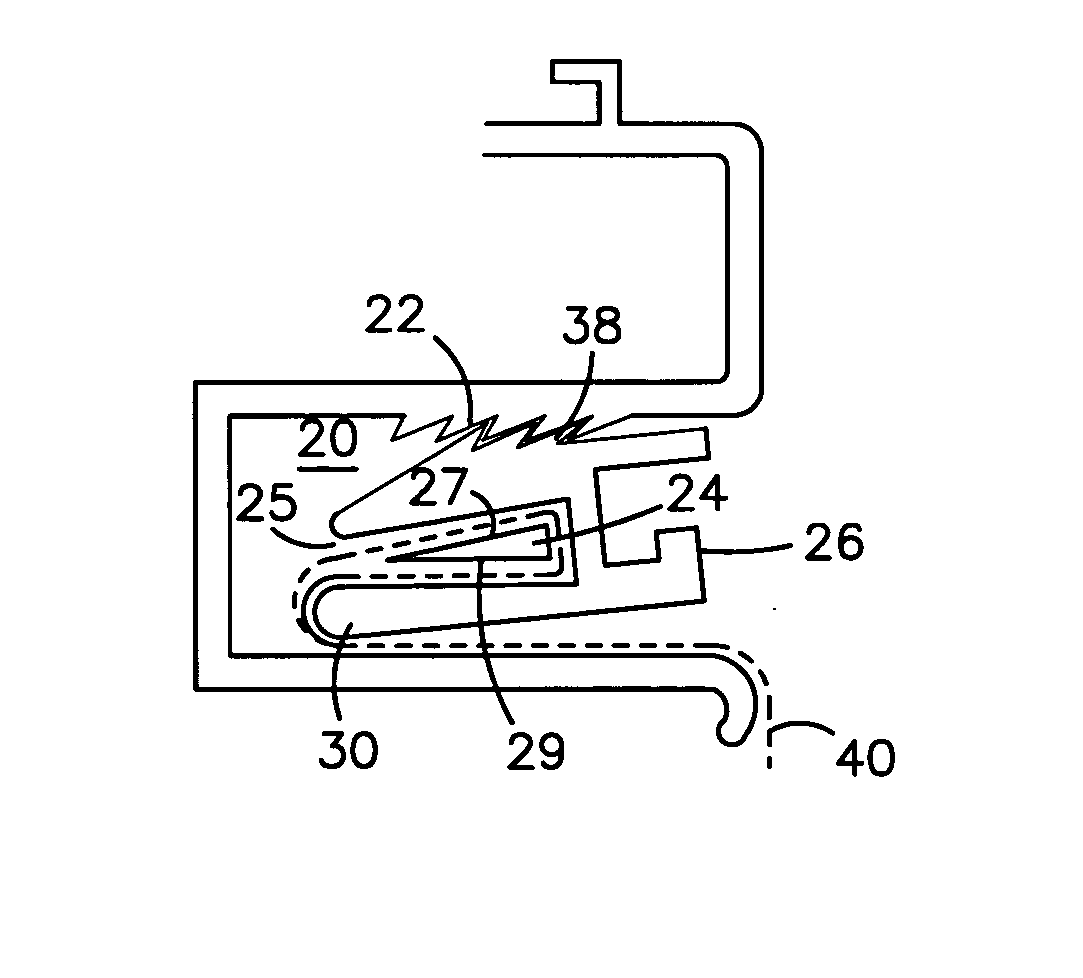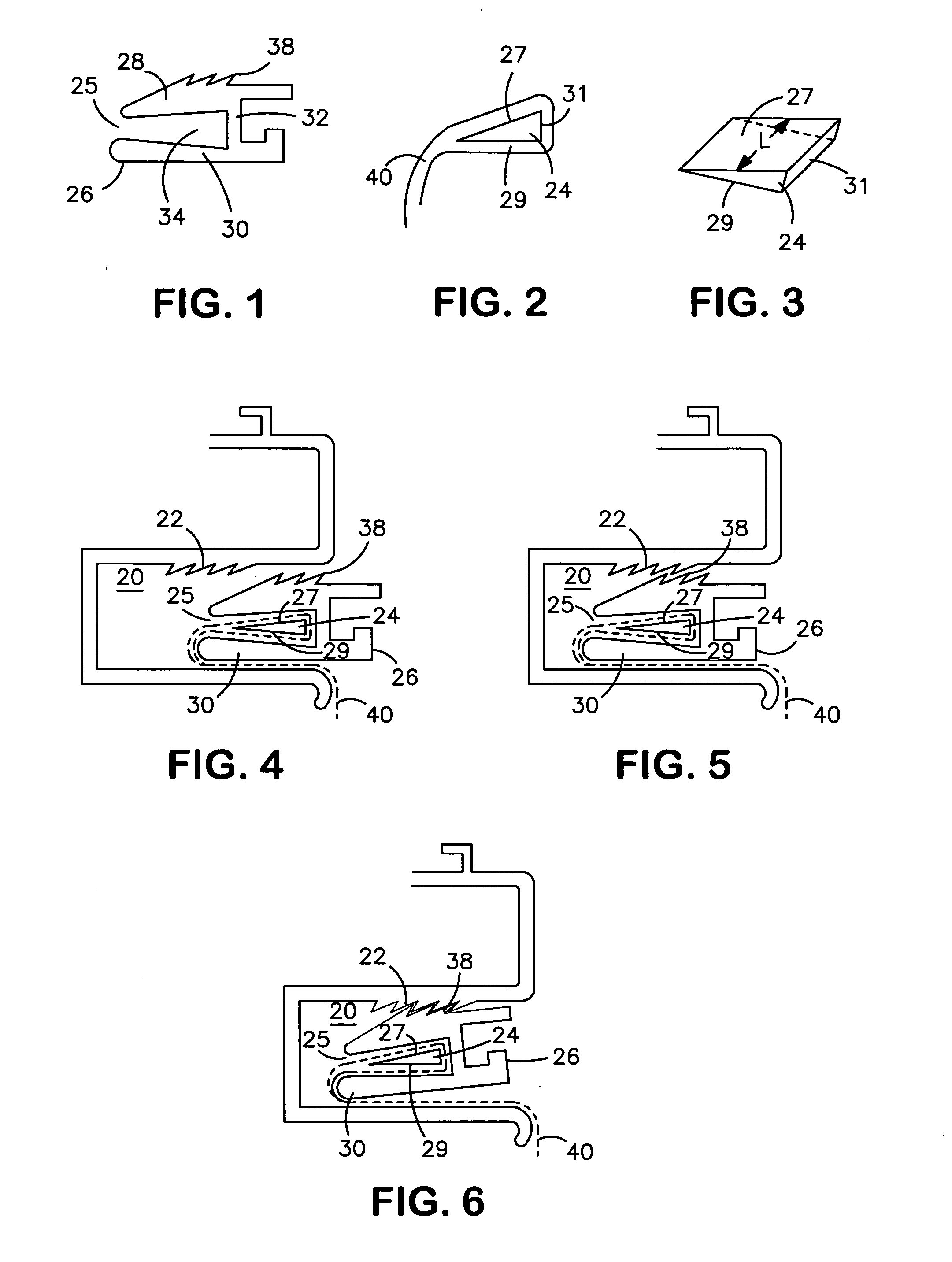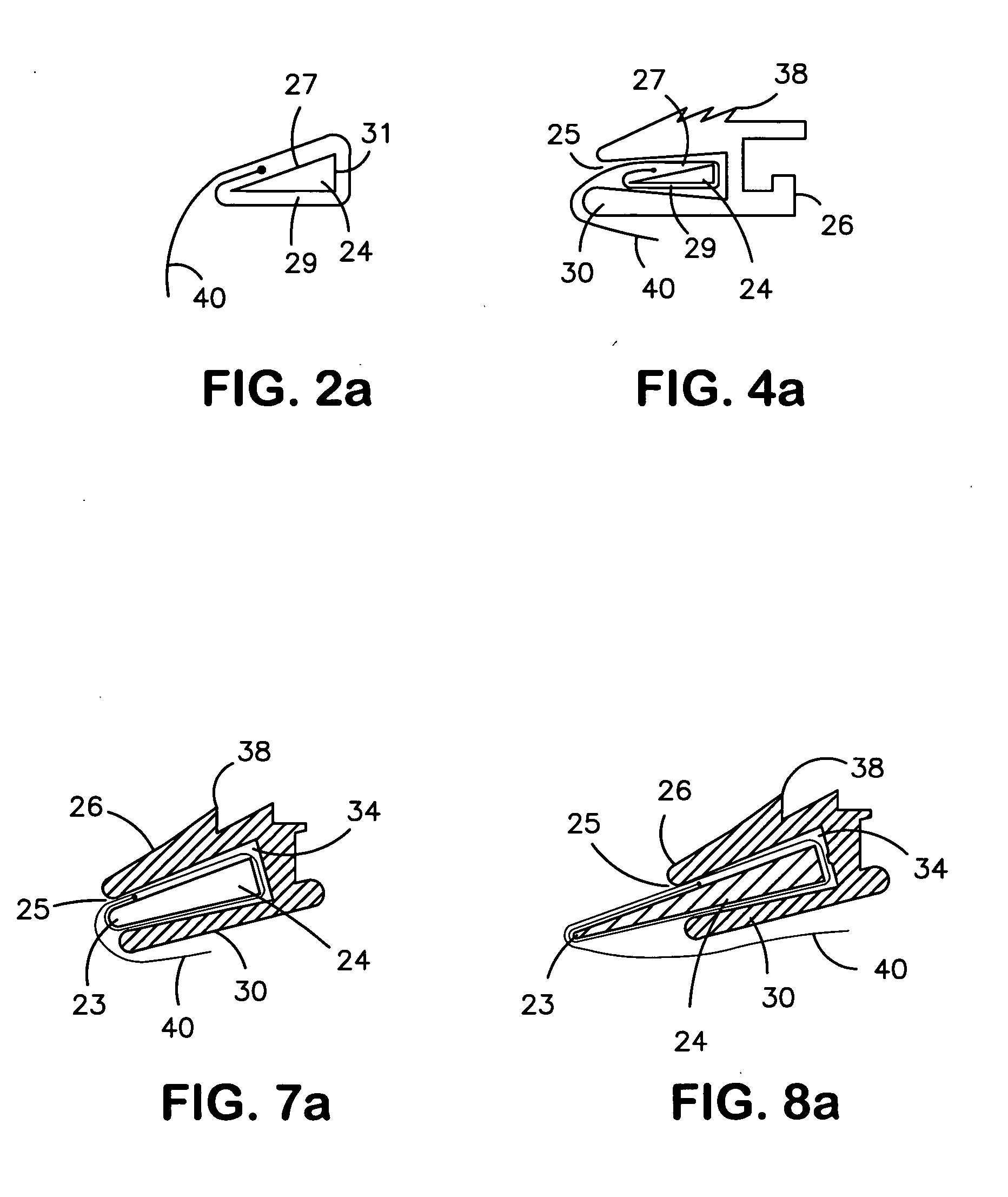Flexible material tri-wedge bar and clamp assembly for use with a tensioning device
a technology of flexible material and clamp assembly, which is applied in the direction of snap fasteners, instruments, boards, etc., can solve the problems of deformation of material, material tearing, damage to flexible material, etc., and achieve the effect of minimal strain on flexible material and maximum gripping properties
- Summary
- Abstract
- Description
- Claims
- Application Information
AI Technical Summary
Benefits of technology
Problems solved by technology
Method used
Image
Examples
Embodiment Construction
[0030] The subject of the present invention is an improvement to the tensioning assembly utilized in the Coleman U.S. Pat. No. 5,398,388 incorporated herein by reference. In the latter patent, a straight line ratchet is created by virtue of a formed receiver C-Channel open area 20 with grooves or teeth 22, or a channel fitted with grooves may be incorporated as part of a sign embodiment or it may be provided as a part to attach to an existing sign embodiment or other structure. This prior art is shown in FIG. 9.
[0031] In place of the tensioning bar and clamp utilized in the above patent, the improved tensioning apparatus is made up of two parts as shown in FIGS. 1-3. The first part shown in FIGS. 2-3 consists in a tapered triangular bar 24, which has two major surfaces 27 and 29 meeting at an acute angle and a base 31. Although the figures show the edges as sharp, they also could be slightly rounded to protect the flexible material. The major surfaces 27 and 29 of the bar may be sm...
PUM
 Login to View More
Login to View More Abstract
Description
Claims
Application Information
 Login to View More
Login to View More - R&D
- Intellectual Property
- Life Sciences
- Materials
- Tech Scout
- Unparalleled Data Quality
- Higher Quality Content
- 60% Fewer Hallucinations
Browse by: Latest US Patents, China's latest patents, Technical Efficacy Thesaurus, Application Domain, Technology Topic, Popular Technical Reports.
© 2025 PatSnap. All rights reserved.Legal|Privacy policy|Modern Slavery Act Transparency Statement|Sitemap|About US| Contact US: help@patsnap.com



